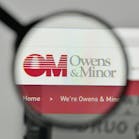HCA Gulf Coast learns the value of standardizing hernia mesh products
Overview
Hospital
HCA Gulf Coast Division
Challenge
Reduce the purchase and unnecessary use of hernia mesh products among certain patients.
Solution
Standardize hernia mesh products for certain patients by following the Ventral Hernia Working Group’s patient grading system.
Vendor
In 2014, across 13 facilities within the HCA Gulf Coast healthcare system, the majority of the 214 hernia mesh units used on patients — 77 percent — were synthetic. However, fewer, more costly, biologic grafts drove the majority of the cost (66 percent) of HCA’s hernia procedures.
Hernia mesh products pose a challenge to both hospital administrators and mesh users when there are no clear, consistently followed guidelines dictating appropriate hernia mesh selection. A lack of product standardization means surgeons are more likely to vary their product choice across cases which can result in inconsistent patient care, inefficiencies in the supply chain, and higher product costs.
When HCA Gulf Coast realized its surgeons were using high-cost biologic grafts in situations where they may not be necessary, and increasing the cost per case for hernia procedures, they sought help and found a solution that helped to reduce biologics use by 30 percent the first year.
Finding evidence to support appropriate mesh use
In 2010, the Ventral Hernia Working Group (VHWG) published a grading system based on patient and wound characteristics, which allows a surgeon to assess each patient’s risk for surgical site occurrences, and select the most appropriate technique and repair material for each case.1 VHWG divides ventral hernia patients into four grades (see Figure 1). According to the VHWG, for most patients (Grade 1), there is a low risk of complications, and synthetic mesh is the most appropriate mesh choice. For repairs considered Grade 2, based on patient characteristics shown in the figure, there may be a risk associated with permanent synthetic material. Only very few cases of hernia repair (less than 12 percent), are considered to be Grades 3 and 4, and may require the use of biologic grafts.1
Figure 1: Hernia Grading System and Mesh Selection Considerations (Adapted from Breuing, 2010)1
Developing a strategy
HCA Gulf Coast adopted appropriate hernia mesh use recommendations from the VHWG with the goal of maintaining good clinical outcomes and simultaneously reducing costs. The emphasis was placed on using biologic grafts only when necessary and medically indicated (Grades 3 or 4), and switching to absorbable or synthetic mesh products across all other clinical situations. The Division Clinical Resource Director for Supply Chain at HCA Gulf Coast worked closely with Davol to adopt VHWG appropriate use recommendations. The company demonstrated that their comprehensive portfolio of mesh materials provided an opportunity for offering standard of care for hernia patients across all hernia grades, while simultaneously contributing to cost savings and adhering to VHWG recommendations. The aim was to standardize HCA Gulf Coast’s hernia mesh products by using biological grafts only in those cases which require a biologic implant; Phasix™ Mesh in cases with patient comorbidities (Grade 2); and Davol synthetic mesh products across most other situations (Grades 1 and 2).1-6 The facility learned that by switching to Phasix™, which is on average less than half the cost of a comparable biologic, they would save money without risking patient safety.
Presenting the case
The Supply Management Action Team (SMAT) Committee reviewed the initiative first. Each facility has its own SMAT committee to review new products and initiatives, study the the available clinical evidence, and determine if the product in questions is the best choice for patients at the best price. The SMAT committee believed it was and the initiative was then presented to the OR Director Group and the team of Clinical Resource Directors. The involvement of these teams ensured that each facility was receptive to Davol clinical representatives, who helped HCA Gulf Coast to communicate the initiative to surgeons. Introducing the opportunity to individuals within each facility who spoke to the importance of the project was essential to its eventual success.
Providing scientific evidence and literature to support the initiative also bolstered the program’s strength and facilitated greater confidence among clinical stakeholders. Davol representatives also provided in-services and training on the Davol product line, and helped HCA to exchange competitor products, through its product exchange program.
Focusing attention on the appropriate usage of expensive biologic products in hernia repair helped increase awareness among surgeons at HCA Gulf Coast. Now that the products are ordered and approved on a case-by-case basis, it is more difficult for surgeons to argue a strong case for using biologics outside of the VHWG recommendations.
Achieving the goal
At HCA Gulf Coast, using hernia mesh products according to the VHWG recommendations resulted in a total savings of $399,078 in the first year (2014) of the initiative, which included an overall reduction of $503,707 spent on biologic grafts. The cost per case was also reduced substantially.
In addition to the direct cost-savings realized from reduced product costs, standardized mesh use helped to reduce the number of products kept in stock, reduced the number of SKUs, and minimized the risk of stock-outs. With evolving product lines and continuous innovation, this form of partnership between vendor and facility may provide an opportunity for the continuous adoption of new and improved products, such as the fully absorbable Phasix™ ST Mesh, which has a hydrogel barrier to minimize tissue attachment, allowing for intraabdominal placement. In cases when a biologic graft is the best choice, Bard’s XenMatrix AB graft provides an antibacterial coating to inhibit MRSA, E-coli, and other bacteria colonization of the graft.
At HCA Gulf Coast, the success of the appropriate mesh use initiative was so significant, and the perception of the project was so positive, that a second project is currently underway. Hernia mesh fixation devices are being standardized in collaboration with Davol at HCA Gulf Coast. The approach described in this article can present opportunities for success across many product categories, with much of the success attributed to regular communication between the vendor and the facility. HPN
References:
1. Breuing K, Butler CE, Ferzoco S, Franz M, Hultman CS et al. (2010) Incisional ventral hernias: Review of the literature and recommendations regarding the grading and technique of repair. Surgery 148 (3): 544-558.
2. Kanters AE, Krpata DM, Blatnik JA, Novitsky YM, Rosen MJ (2012) Modified hernia grading scale to stratify surgical site occurrence after open ventral hernia repairs. Journal of the American College of Surgeons 215 (6): 787-793.
3. Koltz PFM, Frey JM, Bell DM, Girotto JM, Christiano JM et al. (2013) Evolution of Abdominal Wall Reconstruction: Development of a Unified Algorithm With Improved Outcomes. Annals of Plastic Surgery 71 (5): 554-560.
4. Brown CN, Finch JG (2010) Which mesh for hernia repair? Annals of the Royal College of Surgeons of England 92 (4): 272-278.
5. De Noto G, Reaven N, Funk S (2013) Ventral hernia: retrospective cost analysis of primary repair, repair with synthetic mesh, and repair with acellular xenograft implant. Open Access Surgery 6 23-32.
6. Robinson TN, Clarke JH, Schoen J, Walsh MD (2005) Major mesh-related complications following hernia repair: events reported to the Food and Drug Administration. Surgical endoscopy 19 (12): 1556-1560.
7. Currently no surgical mesh device has been approved for use or cleared by the FDA for use in contaminated or infected wounds.






